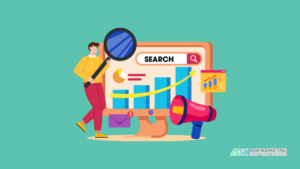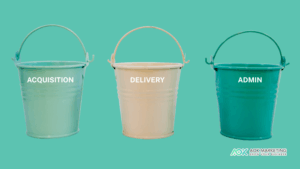Quick summary: Which Google Ad campaign type fits each buyer stage?
By Dave Burnett, Digital Marketing Expert at AOKMarketing.com • Last updated: June 22, 2025
- Match the ad to awareness. Cold prospects need Display or YouTube. Warm prospects convert on Search or Shopping.
- Performance Max is not step one. It works only after you collect conversion data.
- Remarketing multiplies return on investment (ROI). Show new offers to people who already visited you.
Why does choosing the right Google Ad type matter?
Each campaign format reaches people in a different mindset. Search Ads meet users who are actively looking. Display Ads interrupt browsers who may not know you. The wrong match lowers click-through rate, increases cost per click, and drains budget.
Put another way: the ad type sets the stage for success or failure. Said differently: campaign choice can make or break results, even with the same offer and spend.
Real examples that prove ad type timing works
- GS1 US used a three-phase mix—Display for awareness, YouTube for nurture, Search for intent—and beat event sign-ups by 312 percent.
- PacketLabs skipped broad reach, ran high-intent non-branded Search, and closed clients worth USD 57 000 on a USD 5 500 cost per acquisition.
- Ron White Shoes shifted budget from social platforms to a Search-led funnel and hit a 21.5× return on ad spend.
Different industry, same lesson: the right ad at the right time changes everything.
What will I learn from this guide?
You will learn which Google campaign type aligns with cold, warm, and hot traffic. You will see why some ads flop when shown too early. You will know when to delay Performance Max and how to stack campaigns for compounding gains.
When should I use Google Search Ads?
Best for mid to high awareness. People already indicate intent with their query.
- Branded Search. User types your company or product name. Lowest cost per acquisition, highest conversion rate.
- Non-Branded Search. User searches the pain point or solution (“penetration testing service”). Higher cost, wider reach.
Alternate phrasing: run branded terms to defend your name; run non-branded terms to win new customers.
How do Display Ads and YouTube Ads fit into my funnel?
Display Ads
- Target cold traffic at low awareness.
- Use eye-catching creative and lead magnets.
- Effective for first-touch impressions and cheap retargeting banners.
YouTube Ads
- Also cold, but with audiovisual trust.
- Hook must grab in five seconds or viewers skip.
- Great for storytelling and quick credibility building.
Another way to say it: Display casts a wide net; YouTube tells a short story that warms people faster.
Why is Remarketing critical for ROI?
Remarketing shows ads to visitors who left without buying. These users already know you. Cost per click is lower than cold traffic, and conversion probability is higher. Every dollar spent here has leverage.
Rephrased: remarketing is the safety net that catches lost buyers. Said differently: follow-up ads turn curiosity into revenue.
When should I use Performance Max (PMax) campaigns?
Performance Max combines all Google inventory—Search, Display, YouTube, Gmail, Discover—under one algorithm.
- Use only after you have stable conversion tracking.
- Feed the system at least 50 conversions so automation can learn.
- Start with tight asset groups and single conversion goals.
Alternative phrasing: PMax is a jet engine that needs fuel; the fuel is data. Without data, it burns money.
How do Shopping Ads and Local Services Ads work?
Shopping Campaigns
- Show product images, price, and reviews directly in results.
- Ideal at the bottom of the funnel when buyers compare options.
- Requires accurate product feed and high-quality images.
Local Services Ads (LSAs)
- Pay per lead, not per click.
- Appear with a Google Guarantee badge that lifts trust.
- Only effective if your service category matches exactly.
Another way: Shopping answers “What should I buy?”; LSAs answer “Who should I hire nearby?”.
What do most marketers overlook about Google Ads?
Performance Max is not a shortcut. Launching it without historical conversions often wastes budget.
Category accuracy in LSAs is non-negotiable. A single mismatch removes you from results.
The first five seconds of a YouTube spot decide everything. Boring intros kill even great offers.
Rephrase: Poor data, wrong category, or dull hooks—each can sink results regardless of spend.
What is the step-by-step plan for campaign rollout?
- Start with Search Ads (branded, then non-branded) to capture high intent.
- Add Remarketing to recover visitors and multiply return.
- Layer Display and YouTube for scalable awareness.
- Introduce Performance Max once conversions reach statistical significance.
- Use Shopping or LSAs if you sell products or local services.
Simplified: crawl with Search, walk with remarketing, run with Display/YouTube, fly with PMax.
Pros and cons of each Google Ad type
| Ad Type | Pros | Cons |
|---|---|---|
| Search | High intent, measurable | Competitive bids |
| Display | Cheap reach | Low click quality |
| YouTube | Storytelling power | Creative demands |
| Remarketing | Strong ROI | Requires cookie consent |
| Performance Max | Automation scale | Black-box reporting |
| Shopping | Visual intent | Needs feed management |
| LSA | Lead guarantee | Strict categories |
About The Author
Dave Burnett
I help people make more money online.
Over the years I’ve had lots of fun working with thousands of brands and helping them distribute millions of promotional products and implement multinational rewards and incentive programs.
Now I’m helping great marketers turn their products and services into sustainable online businesses.
How can I help you?





